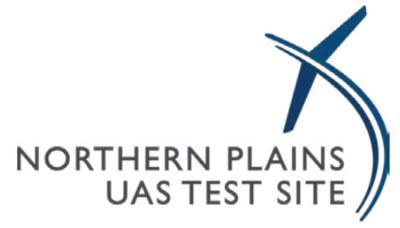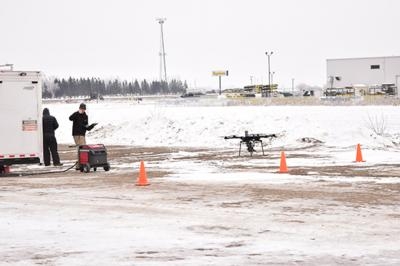Sun, Sep 20, 2020
This Infrastructure Will (First) Enable BVLOS Flights In Mckenzie And Williams Counties
The Northern Plains UAS Test Site (NPUASTS) has begun the initial stages of implementing infrastructure for North Dakota’s statewide UAS beyond visual line of sight (BVLOS) network.

The key site location chosen for this initial deployment of the BVLOS network is in the surrounding areas of Watford City and Williston, ND, due to the proximity of many potential use cases and existing state and local government infrastructure that can be leveraged for this deployment.
“We’re excited to begin the first stage of building this network in western North Dakota. It is ideally located in the heart of North Dakota’s oil and gas industry and covers a population center that will directly benefit from the network,” said Nicholas Flom, executive director of NPUASTS. “This means that even the very first stage of the network will be commercially viable.”
L3Harris Technologies and Thales USA, two leading aviation companies, have been selected to build out this baseline key site infrastructure. This infrastructure will enable BVLOS flights in McKenzie and Williams counties – with additional locations rolling out after the key site has been validated.
“The state of North Dakota’s Statewide BVLOS Network is truly the first of its kind,” said Todd Donovan, vice president of air traffic management at Thales USA. “This robust network, that safely and securely integrates UAS into the national airspace, will serve as an enviable model and be the catalyst for broader commercial UAS operations for years to come as it relies on a complete solution that addresses the FAA’s safety risk management process.”

Key site implementation is beginning immediately and will include extensive verification and validation system testing in coordination with the Federal Aviation Administration (FAA). Ensuring the safety and reliability of the network is essential as it will guide future improvements as the network is built out.
“System testing of the network is absolutely necessary for safety, and it will also allow us to perform use-case development flights to set the standard requirements for any aircraft seeking to fly on the network,” said Jim Cieplak, program manager of the statewide network. “Constantly checking for efficacy also means being prudent with the state’s investment. We are making sure the very best iteration of this technology is what we implement."
More News
19-Year-Old Pilot Was Attempting to Fly Solo to All Seven Continents On his journey to become the first pilot to land solo on all seven continents, 19-year-old Ethan Guo has hit a >[...]
From 2017 (YouTube Edition): A Quality LSA For Well Under $100k… Aeroprakt unveiled its new LSA at the Deland Sport Aviation Showcase in November. Dennis Long, U.S. Importer>[...]
Hazardous Weather Information Summary of significant meteorological information (SIGMET/WS), convective significant meteorological information (convective SIGMET/WST), urgent pilot>[...]
Aero Linx: Historic Aircraft Association (HAA) The Historic Aircraft Association (HAA) was founded in 1979 with the aim of furthering the safe flying of historic aircraft in the UK>[...]
"We would like to remember Liam not just for the way he left this world, but for how he lived in it... Liam was fearless, not necessarily because he wasn't afraid but because he re>[...]
 TikToker Arrested After Landing His C182 in Antarctica
TikToker Arrested After Landing His C182 in Antarctica Classic Aero-TV: Versatile AND Practical - The All-Seeing Aeroprakt A-22 LSA
Classic Aero-TV: Versatile AND Practical - The All-Seeing Aeroprakt A-22 LSA ANN's Daily Aero-Term (06.27.25): Hazardous Weather Information
ANN's Daily Aero-Term (06.27.25): Hazardous Weather Information ANN's Daily Aero-Linx (06.27.25)
ANN's Daily Aero-Linx (06.27.25) Aero-News: Quote of the Day (06.27.25)
Aero-News: Quote of the Day (06.27.25)




